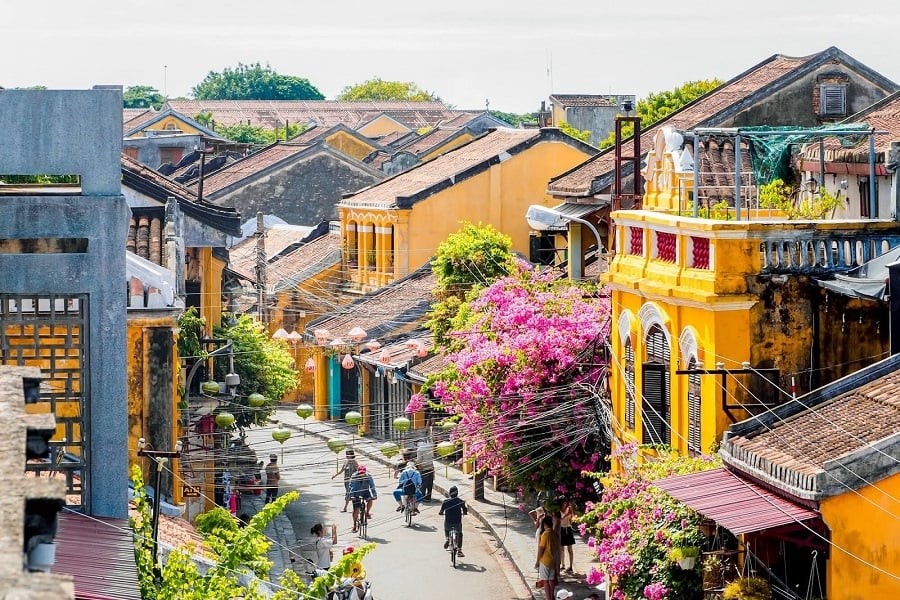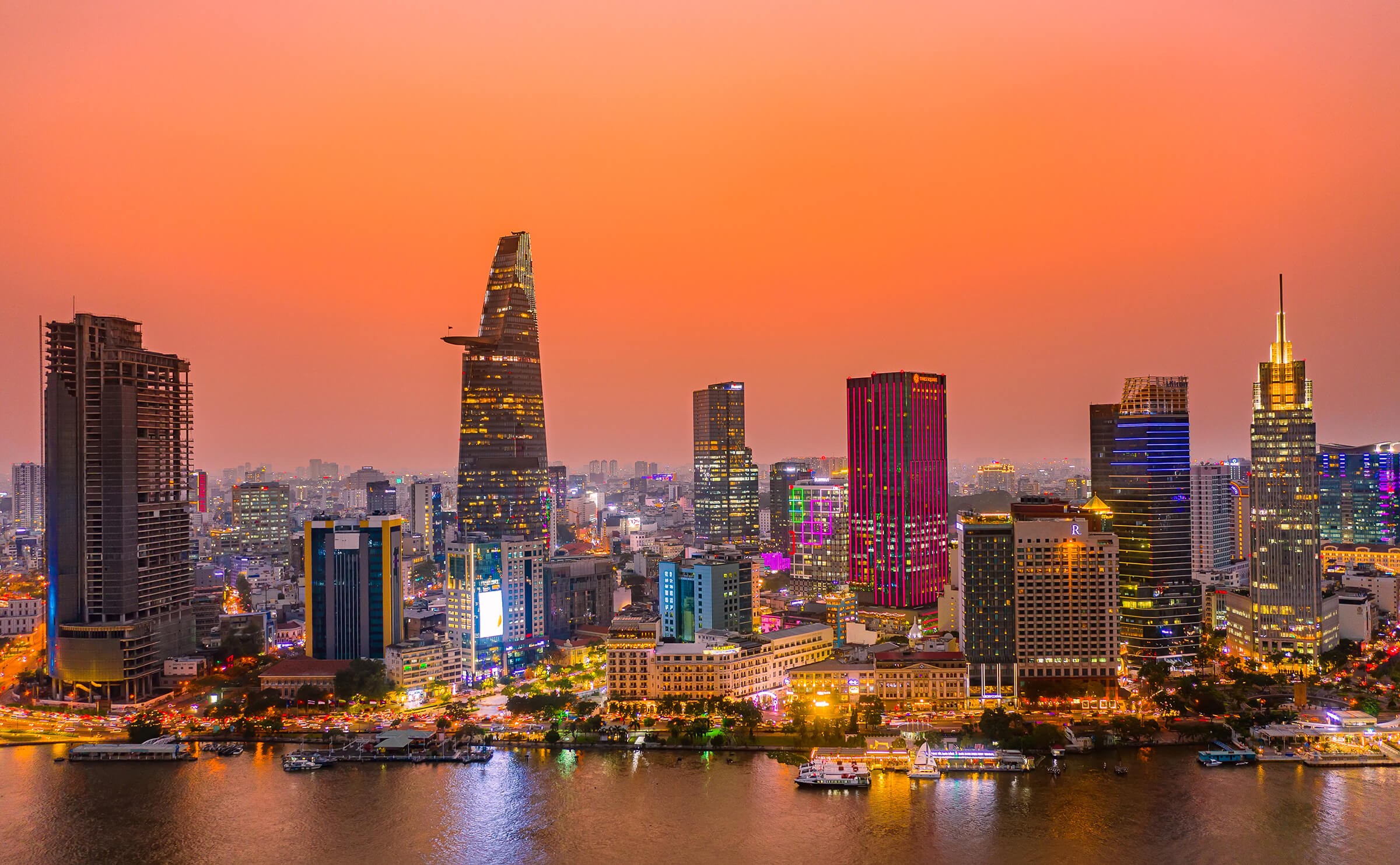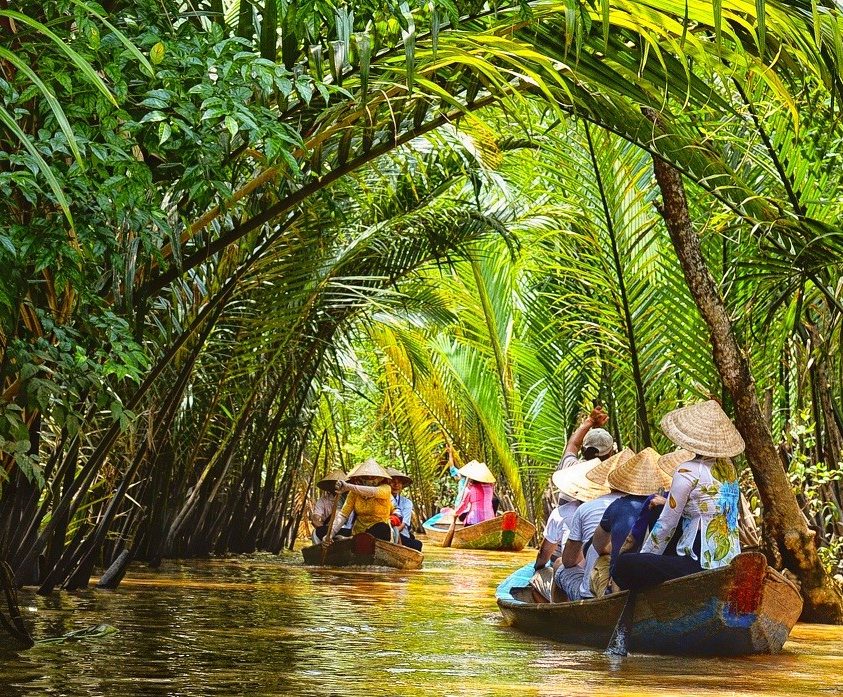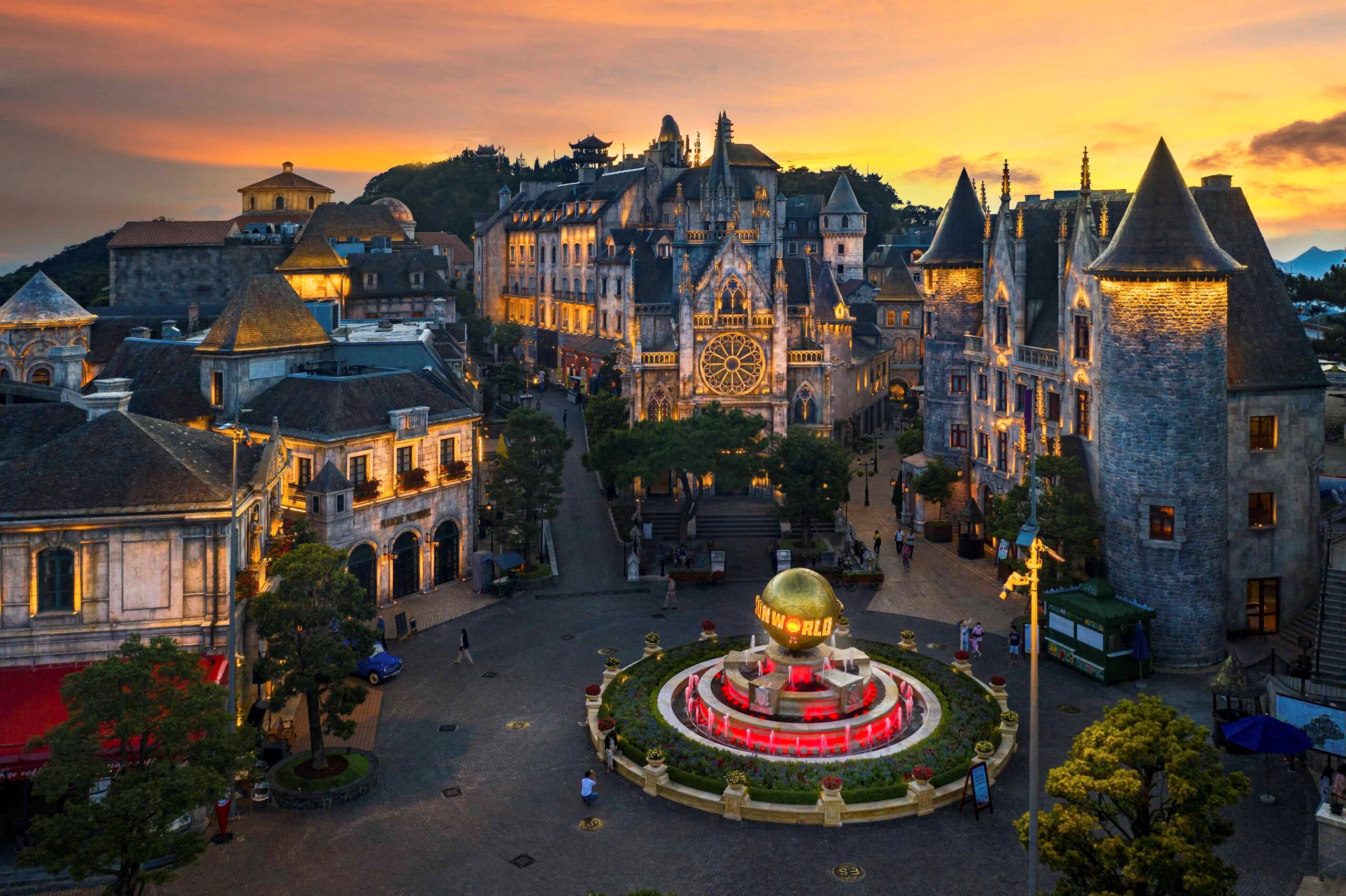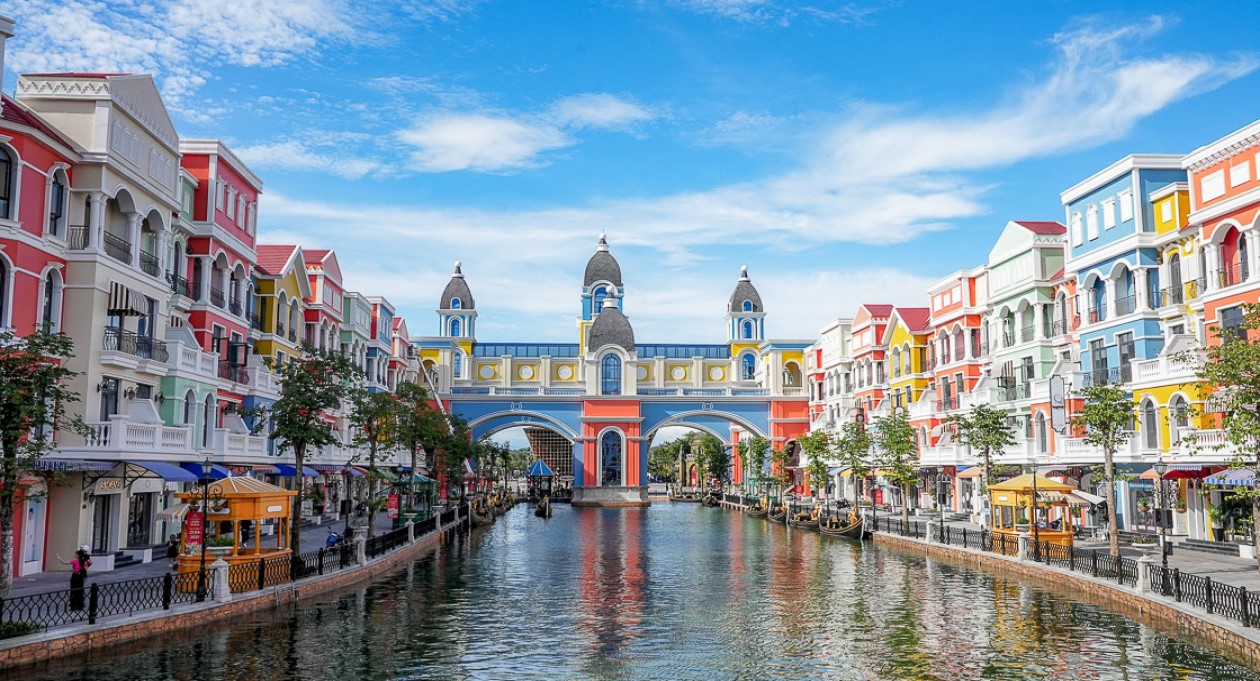Hà Nội, 7 điều nên biết trước khi ghé thăm thủ đô.
Hà Nội, thủ đô của Việt Nam, là một điểm dừng chân nhất định không thể bỏ qua, đặc biệt nếu bạn bắt đầu hành trình từ miền Bắc. Bạn đã biết rằng vào đầu năm 2024, TripAdvisor đã công nhận Hà Nội trong hai hạng mục? Thành phố này được xếp hạng thứ 4 trong 25 điểm đến hàng đầu trên thế giới và được công nhận là điểm đến ẩm thực hàng đầu thế giới.

Thủ đô ngàn năm tuổi cung cấp nhiều trải nghiệm văn hóa, du lịch và ẩm thực đa dạng, đậm chất lịch sử đã định hình quốc gia. Trong bài viết này, AVS muốn chia sẻ với bạn nhiều khía cạnh của Hà Nội qua con mắt của người dân địa phương, để bạn có thể hiểu rõ hơn về thủ đô của Việt Nam và có được những ý tưởng thú vị cho chuyến đi của mình.
1. HÀ NỘI NẰM Ở ĐÂU?
Hà Nội nằm ở trung tâm miền Bắc.Thành phố nằm bên bờ phía bắc của sông Hồng, một con sông bắt nguồn từ dãy núi Duyên Hải, Trung Quốc.
Cách thành phố Hà Nội khoảng 3 giờ về phía đông là vịnh Hạ Long, nằm trong vùng biển Thái Bình Dương. Vịnh Hạ Long trên cạn, một phần của Hạ Long cách thành phố 3,5 giờ đi xe hơi về phía nam. Về phía tây và đông bắc của Hà Nội, là những vùng núi đẹp đẽ tuyệt vời.

Từ Hà Nội, mất khoảng một giờ bay để đến Đà Nẵng, thủ đô của khu vực Trung Bộ, và khoảng 2 giờ để đến thành phố Hồ Chí Minh. Hà Nội cách khoảng 3 giờ bay từ các thành phố lớn trong khu vực như Bangkok, Singapore, Kuala Lumpur, Hong Kong…
2. HÀ NỘI NHƯ THẾ NÀO?
Đầu tiên, Hà Nội là một thành phố lịch sử đã từng mang nhiều tên gọi khác nhau. Tên Hà Nội xuất hiện vào năm 1831 trong thời kỳ của vua Minh Mạng. Tên này có nghĩa là “thành phố ở trong sông” vì vào thời điểm đó, Hà Nội nằm giữa ba con sông: sông Hồng, sông Nhưệ và sông Đáy.
Hà Nội chứa đựng nhiều công trình kiến trúc đáng chú ý, là nhân chứng của giá trị văn hóa đặc biệt. Thành phố đã trải qua những thời kỳ quan trọng và là địa điểm của những sự kiện quan trọng trong lịch sử đất nước. Nằm ở vị trí trung tâm và ảnh hưởng, Hà Nội là trung tâm chính trị, văn hóa và kinh tế của Việt Nam.

Ngoài ra, Hà Nội là một thủ đô của sự đối lập. Thành phố này cung cấp một sự kết hợp hoàn hảo giữa quá khứ và hiện tại, nơi truyền thống và hiện đại tồn tại hài hòa. Các khu phố cổ, với những toà nhà baroque và kiến trúc thuộc địa, kết hợp hoàn hảo với các cấu trúc hiện đại. Thành phố này quyến rũ bởi bầu không khí cổ điển và yên bình của nó, khác biệt so với sự hối hả của thành phố Hồ Chí Minh, “thủ đô” phía Nam.
3. NHỮNG ĐỊA ĐIỂM KHÔNG THỂ BỎ QUA ?
Hồ Hoàn Kiếm – Hồ Gươm

Hồ Hoàn Kiếm, còn được gọi là Hồ Gươm, là một điểm thu hút trung tâm không thể bỏ qua tại Hà Nội. Giữa hồ này là hòn Rùa, liên kết với huyền thoại rằng vua Lý Thái Tổ đã nhận một thanh kiếm linh thiêng từ linh rùa để bảo vệ đất nước khỏi người xâm lược Trung Quốc. Hòn đảo chứa tháp Rùa, biểu tượng đặc trưng của Hà Nội và của Việt Nam.
Xung quanh hồ Hoàn Kiếm là một con phố đi bộ sôi động, nơi bạn có thể quan sát cuộc sống hàng ngày ở Hà Nội, tập thể dục, thể dục và khám phá các gian hàng đường phố kiểu Việt Nam.
Một hòn đảo khác của hồ chứa Đền Voi Phục, tôn vinh linh rùa và biểu tượng hòa hợp giữa Nho giáo, Phật giáo và Đạo giáo, ba tôn giáo lớn của Việt Nam.
Phố cổ Hà Nội

Phố cổ Hà Nội, nơi chứa đựng một lịch sử hấp dẫn từ thời đại nhà Lý vào thế kỷ 11, sôi động bởi nhiều hoạt động thủ công và thương mại, sống động với nhịp sống hàng ngày.
Ngày nay, khu phố cổ này là một nhân chứng trung thực của thời gian trôi qua. Các con phố, thường được biết đến dưới tên “Hà Nội 36 phố phường”, mang các tên được lấy cảm hứng từ các sản phẩm được bán trước đây. Ví dụ, phố Hàng Trống được sống động bởi âm thanh mê hoặc của trống truyền thống, phố Hàng Tre giới thiệu công việc với tre, và phố Hàng Đồng lung linh nhờ các nghệ nhân tài năng làm việc với đồng một cách khéo léo.Chợ Đồng Xuân, một trong những chợ cổ nhất của thủ đô, nằm trong khu phố cổ. Được xây dựng vào năm 1889 trong thời kỳ thuộc địa Pháp, đó là một điểm không thể bỏ qua khi bạn thăm thành phố.
Phố đường sắt Hà Nội

Phố đường sắt là vẻ đẹp bất biến của thủ đô, chạy qua các con phố của phố cổ Hà Nội từ thế kỷ XX, trong thời kỳ thực dân Pháp. Trong nhiều năm qua, tàu chạy một cách yên bình, hòa mình vào nhịp sống của nơi đây.Những gì thu hút khách du lịch là vị trí của nó giữa các khu dân cư. Sự hẹp hòi không thể tin được của không gian giữa đường sắt và nhà cửa, chỉ cách nhau một vài bước chân, làm cho người ta kinh ngạc. Bạn có thể hầu như tin rằng nó có thể nuốt chửng các căn nhà xung quanh.
Phần này của Hà Nội có kiến trúc kết hợp một cách khéo léo giữa các ngôi nhà cổ và hiện đại. Các màu sắc khác nhau tạo ra một bầu không khí “cổ điển” ở mỗi góc phố, tạo ra một hình ảnh ấn tượng.
Nhà tù Hỏa Lò (Nhà tù Trung Ương)

Vào cuối thế kỷ XIX, để đối phó với các phong trào kháng chiến của nhân dân Việt Nam, người Pháp đã củng cố hệ thống đàn áp của họ bằng cách thêm cảnh sát, cải thiện hệ thống tư pháp và xây dựng một mạng lưới nhà tù. Năm 1896, họ xây dựng nhà tù Hỏa Lò, mà họ gọi là “Nhà tù Trung Ương”, một trong những nhà tù lớn nhất của người Pháp ở Đông Dương.
Nhà tù Hỏa Lò là biểu tượng của sự hy sinh, sự kiên trì đối mặt với khó khăn và tinh thần chiến đấu không khuất phục của các chiến sĩ cách mạng Việt Nam chống lại kẻ thù.
Giờ mở cửa: Di tích mở cửa hàng ngày từ 8:00 sáng đến 5:00 chiều, không có giờ trưa.
Mua vé: Vé có thể mua trực tiếp tại cửa chính.
Giá vé: Giá vé là 50.000 VND mỗi người.
Văn Miếu
Văn Miếu – Quốc Tử Giám, được xây dựng vào năm 1070 dưới triều đại của vua Lý Thánh Tông, là một tập hợp kiến trúc quan trọng. Nó bao gồm Văn Miếu, dành riêng cho việc thờ phụng Khổng Tử và các nhà sư Khổng Tử, cũng như Quốc Tử Giám, trường đại học đầu tiên của Việt Nam.

Công trình uy nghiêm này chứa đựng các con rùa đá nổi tiếng mang 82 bia tiến sĩ, chứng tỏ kiến thức và hiểu biết của người Việt trong quá khứ. Đền Văn Miếu là biểu tượng cho sự quan trọng được đặt vào giáo dục, trí tuệ và việc thúc đẩy các giá trị đạo đức trong xã hội Việt Nam từ nhiều thế kỷ qua.
Thành Long Thăng Long
Thành Long Thăng Long là một tập hợp của các di tích lịch sử liên quan đến các triều đại Việt Nam. Xây dựng từ năm 1010, công trình kiến trúc này đã trải qua hàng thế kỷ với một lịch sử kéo dài hơn 13 thế kỷ. Khi bạn thăm thú này, bạn sẽ khám phá ra những đặc điểm cổ kính của Việt Nam thông qua những bức tường làm chứng về thời gian và một bầu không khí trang nghiêm nhắc nhở về một thủ đô cổ kính.

Bên trong khuôn viên có tháp cờ Hà Nội, được xây dựng vào năm 1812. Nó vẫn là cấu trúc tốt nhất của thành Long Thăng Long. Sử dụng như một trạm quan sát quân sự trong thời kỳ thuộc địa Pháp, tháp cờ Hà Nội ngày nay nằm tại nơi của Bảo tàng Lịch sử Quân sự Việt Nam.
Khi bạn thăm Thành Long Thăng Long, bạn sẽ có cơ hội khám phá các yếu tố khác nhau, bao gồm Bảo tàng Lịch sử Quân sự Việt Nam. Hãy dành đủ thời gian nếu bạn muốn khám phá tất cả các đặc điểm lịch sử của tập thể này.
Lăng Bác
Gần Thành Long Thăng Long là Lăng Tẩm của Hồ Chí Minh và khuôn viên của mình, bao gồm cả cung điện Tổng thống và Bảo tàng Hồ Chí Minh. Hồ Chí Minh, người sáng lập nước Cộng hòa Dân chủ Việt Nam và anh hùng dân tộc được tôn kính. Lăng Tẩm của ông, một công trình lớn với đá granite màu xám, chứa mộ của ông được bảo vệ bằng một lớp kính, mở cửa cho công chúng thăm viếng và du lịch.

Gần đó là cung điện Tổng thống, trước đây là nơi ở của thống đốc đại lục Đông Dương trong thời kỳ thuộc địa. Bảo tàng Hồ Chí Minh, cũng nằm trong khu vực này, tái hiện lại cuộc đời của người đã thay đổi lịch sử Việt Nam. Đối diện với tập thể này, bạn cũng sẽ tìm thấy Trụ sở Quốc hội Việt Nam.
Bảo tàng Dân tộc học
Bảo tàng Dân tộc học Hà Nội là một điểm đến không thể bỏ qua, mang đến cho bạn một trải nghiệm sâu sắc vào văn hóa và lịch sử Việt Nam. Các triển lãm chi tiết về cách sống, truyền thống, nghề thủ công, vật dụng và phong tục của 54 dân tộc Việt Nam, cũng như các tác phẩm kiến trúc.

Các hoạt động tương tác cho phép khách tham gia tích cực vào sự khám phá văn hóa này. Giải thích bằng tiếng Pháp có sẵn. Hơn nữa, vào cuối tuần, có một buổi biểu diễn rối nước miễn phí. Được coi là bảo tàng đẹp nhất của thủ đô và cả nước, nó được khuyến khích mạnh mẽ!
4. XUNG QUANH HÀ NỘI CÓ GÌ HAY ?
Các điểm không thể bỏ qua ở ngoại ô Hà Nội là các làng truyền thống với những truyền thống mạnh mẽ, nơi có hàng nghìn người Việt. Các làng này, yên bình, chân thành và đồng quê, đưa bạn vào một bầu không khí độc đáo.
Làng cổ Đường Lâm và những cánh đồng lúa xung quanh

Làng Đường Lâm chứa đựng các kiến trúc bảo quản từ 400 năm trước đến nay, như cổng chào, đình làng và các địa điểm tôn giáo. Một cuộc đi bộ hoặc đi xe đạp qua các đình chùa và nhà riêng giúp bạn thoát ra khỏi thời gian. Bạn có thể tận hưởng cuộc đi bộ này để trò chuyện vui vẻ với người dân địa phương và khám phá các cánh đồng lúa, củ cải và ngô. Đây là nơi lý tưởng để khám phá cuộc sống nông thôn truyền thống trong đồng bằng sông Hồng.
Các làng nghề xung quanh Hà Nội
Hà Nội được bao quanh bởi các làng thủ công cổ xưa từng chuyên sâu vào các nghề nghiệp khác nhau. Một số làng này đã bảo tồn các hoạt động truyền thống của họ cho đến ngày nay, để trải nghiệm văn hóa miền Bắc, đừng bỏ lỡ những làng đặc biệt này:

- Làng Bát Tràng được liên kết với gốm sứ, nơi bạn có thể tham gia trải nghiệm làm gốm và mua những sản phẩm thủ công độc đáo.
- Làng vải lụa Vạn Phúc là nơi sản xuất lụa truyền thống, cung cấp cho bạn cơ hội mua sắm những tác phẩm lụa cao cấp, mảnh màu sắc và truyền thống.
- Làng Đông Hồ chuyên về mảng tranh in từ thời kỳ Lê, với những bức tranh màu sắc sống động và biểu tượng của văn hóa dân gian Việt Nam.
5. VĂN HOÁ ẨM THỰC CỦA HÀ NỘI NHƯ THẾ NÀO?
dạng, từ những món đặc sản của phố cổ đến các món ăn hiện đại, tạo nên một bản sắc riêng của văn hóa ẩm thực miền Bắc. Đây là một số món không thể bỏ qua khi đến Hà Nội:
- Bún chả: Một món ăn đặc trưng của Hà Nội, gồm thịt heo nướng và mỳ gạo, thường được ăn kèm với nước mắm chua ngọt và các loại rau sống.
- Phở: Một trong những món ăn nổi tiếng nhất của Việt Nam, phở Hà Nội nổi tiếng với hương vị ngọt tự nhiên của nước dùng và thịt bò mềm.
- Bánh cuốn: Một món ăn sáng truyền thống, bánh cuốn là một loại bánh mỏng được làm từ gạo, ăn kèm với thịt heo băm nhỏ, hành phi và rau sống.
- Chả cá Lã Vọng: Một món ăn đặc trưng của Hà Nội, chả cá Lã Vọng là một loại cá chế biến với hành, mỡ hành và gia vị, thường được ăn kèm với bún, bún hoặc mỳ gạo.
- Bánh mì pate: Một trong những loại bánh mì phổ biến nhất của Việt Nam, bánh mì pate là một loại bánh mì sandwich được làm từ bánh mì, pate, thịt lợn, dưa chuột và rau sống.

6. CÁCH DI CHUYỂN TRONG THÀNH PHỐ HÀ NỘI ?

Trong Hà Nội, có nhiều phương tiện di chuyển khác nhau để bạn chọn lựa:
- Xe buýt: Mạng lưới xe buýt công cộng ở Hà Nội khá phát triển và rẻ tiền. Bạn có thể sử dụng Google Maps hoặc các ứng dụng di động khác để tìm lộ trình và thời gian chờ đợi.
- Xe máy: Thuê một chiếc xe máy là một cách thuận tiện và linh hoạt để khám phá Hà Nội. Tuy nhiên, hãy cẩn thận khi lái xe trong lưu lượng giao thông đông đúc của thành phố.
- Xe taxi và dịch vụ chia sẻ xe: Các dịch vụ taxi truyền thống và các dịch vụ chia sẻ xe như Grab và Gojek có mặt ở Hà Nội và có thể được sử dụng dễ dàng thông qua các ứng dụng di động.
- Đi bộ: Khám phá Hà Nội bằng cách đi bộ là cách tốt nhất để thưởng thức vẻ đẹp và sự sôi động của thành phố.
6. KHI NÀO LÀ THỜI GIAN TỐT NHẤT ĐỂ THĂM HÀ NỘI?

Thời tiết tốt nhất để thăm Hà Nội là vào mùa xuân (tháng 3 – tháng 4) hoặc mùa thu (tháng 10 – tháng 11), khi thời tiết ấm áp và mát mẻ. Mùa hè (tháng 6 – tháng 8) có thể nóng và ẩm, trong khi mùa đông (tháng 12 – tháng 2) thường lạnh và khô.
Ngoài ra, lễ hội Tết Nguyên Đán (mùa lễ hội giao thừa của Việt Nam) là một thời điểm đặc biệt để thăm Hà Nội, khi thành phố trở nên rực rỡ với ánh đèn và các hoạt động văn hóa truyền thống. Tuy nhiên, hãy lưu ý rằng nhiều cửa hàng và địa điểm du lịch có thể đóng cửa trong thời gian này.

